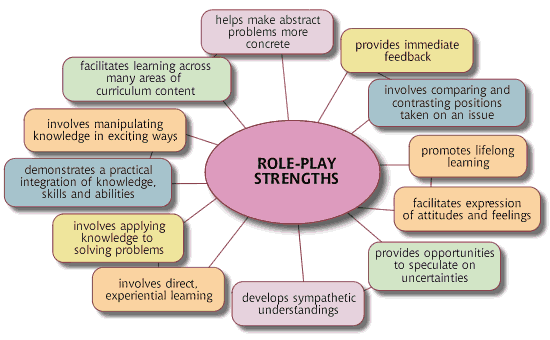Role Play Presentation
| Introduction to Role Play | ||
|---|---|---|
| Role play is a form of experiential learning where participants act out specific scenarios. It is commonly used in various fields such as education, therapy, and business training. Role play allows individuals to practice and develop skills in a safe and controlled environment. | ||
| 1 | ||
| Benefits of Role Play | ||
|---|---|---|
| Enhances communication skills by encouraging active listening and effective verbal and non-verbal communication. Builds empathy and understanding by allowing participants to see situations from different perspectives. Improves problem-solving and decision-making abilities through realistic, hands-on experiences. | ||
| 2 | ||
| Types of Role Play | ||
|---|---|---|
| Simulations: Participants act out real-life scenarios, such as customer interactions or emergency situations. Character Role Play: Participants are assigned specific roles and must act and react accordingly. Improvisation: Participants engage in spontaneous role play without a predefined script or scenario. | ||
| 3 | ||
| Tips for Successful Role Play | ||
|---|---|---|
| Clearly define objectives and expectations for each participant. Provide proper training and guidance to ensure participants understand their roles and responsibilities. Create a supportive and non-judgmental environment that encourages active participation. | ||
| 4 | ||
| Conclusion | ||
|---|---|---|
| Role play is a powerful tool for learning and development. It offers a unique opportunity to practice and improve essential skills in a realistic setting. By incorporating role play into various settings, individuals can enhance their abilities and achieve better outcomes. | ||
| 5 | ||
| References (download PPTX file for details) | ||
|---|---|---|
| Johnson, D. W., & Johnson, R. T. (2013). Join... Kostopoulos, G. (2016). The Role of Role-Play... Thompson, N. (2013). People Skills: How to As... |  | |
| 6 | ||




